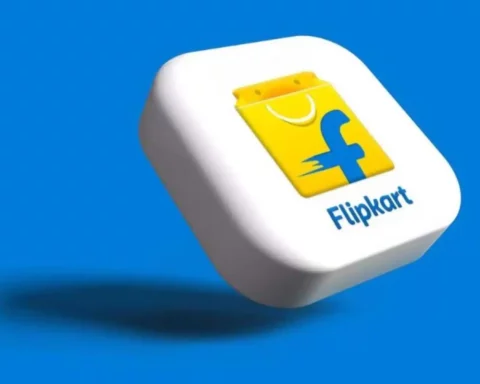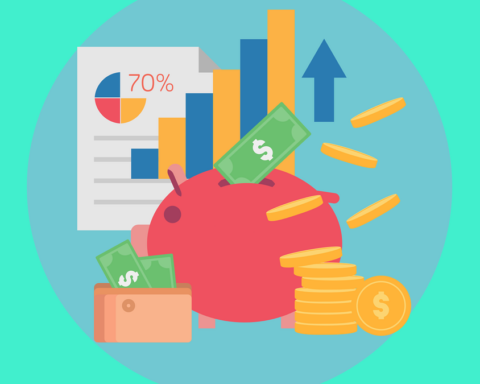From current size of less than Rs1 lakh crore it will grow to over Rs6 lakh crore in the next ten years
It may sound as a distant dream but it will be a reality. Within ten  years, the size of the e-commerce market including e-tail will grow more than six times.
years, the size of the e-commerce market including e-tail will grow more than six times.
One of the fastest growing e-commerce solution company, Infibeam believes that with about 40% of CAGR, the current size of the industry around $14 billion (Rs85,000 crore) will increase to around $100 billion (Rs6.25 lakh crore) by end of 2025.
SMEs are backbone of India and slowly and gradually all of them are moving towards e-commerce. Infibeam, which has pioneered in providing best end-to-end e-commerce solutions to SMEs and large enterprises, projects over six times growth in the coming decade.
Thanks to the telecom revolution, which will further evolve to 4G and beyond, that has given birth to several first time internet users on mobile phones. And the trend will continue till every mobile user in the country starts accessing internet on the smartphone. Infibeam is optimist over the growth story of India as well as e-commerce in India.
On the basis of the past records of growth of number of internet users, it is estimated that the size of e-commerce industry in India will gradually increase to $100 billion within a decade. The way in which Reserve Bank of India and Banks have started giving thrust over mobile commerce or m-commerce, it may take over e-commerce in the coming years.
It is possible that people may stop carrying liquid cash with them and instead of using plastic money whether offline or online, consumer will simply pay it through mobile wallets. In coming years, even a tea vendor on roadside may start accepting money of a cutting chai through m-commerce. This will push e-commerce or m-commerce to grow much faster.
Five years back, with population of 1.2 billion (120 crore), India had about 52.50 crore mobile subscribers. Almost every second person in the country had mobile phone in 2009. At that time, the number of internet connections including broadband and narrowband, were mere 15 million (1.5 crore) out of which about 1 million (10 lakh) were just browsing internet on mobile phones.
Now, this figure has swelled exponentially. By the end of 2014, India had 943 million (94.30 crore) mobile subscribers with population of little more than 1.2 billion (120 crore). The teledensity in last five years increased from 55% to over 78%.
With rise in selling of the number of smartphones and rising internet penetration, the e-commerce on mobile is on rise. By the end of 2014, India has over 85.70 million (8.57 crore) Internet users of which up to 70 million (7 crore) access internet over mobile phones.
The number of total internet users have increased more than 5.7 times while the number of internet users on mobile phones has a rapid increase of 70 times in five years. The number increased from 1 million to 70 million.
Even today, the number of internet users is one tenth of the mobile users and the telecom industry expects that this number will continue to increase. It is estimated that the number of internet users will increase from current 85.70 million (8.57 crore) to over 600 million (60 crore) within 10 years. Almost every second person in the country will be using internet. Hence, with over six times growth in the number of internet users, the e-commerce industry too is expected to grow more than six times by the end of 2025.
At the same time, Infibeam expects that e-commerce will also see lots of changes in the next 10 years. At present, about one third e-commerce consumers prefer cash on delivery (CoD) payment mode. This is expected to reduce drastically. As the next generation growing up with mobile phones, has started trusting e-commerce brands and so they will prefer paying in advance instead of CoD.
Simultaneously, the logistics and supply chain will too improve. Right now, the same day delivery is taking place in the selected cities in India. In coming years, the number of cities covered under same day delivery will also increase.
As and when the number of internet users on mobile phone will increase, slowly and gradually consumers will move towards apps instead of websites. In the coming time, many stores will be only on app or may have mobile supportive websites only.
Right now the perishable products have minimal share in the total categories sold online. In the next ten years, as and when the supply chain and logistics improves, consumers will be able to buy fresh vegetables and fruits online, delivered within 24 hours.
The emerging e-commerce and m-commerce industry will certainly improve the consumer’s standard of living in India. It will also further help in reducing inflation rate and save more. Hence, the future of e-commerce in India is very bright.








